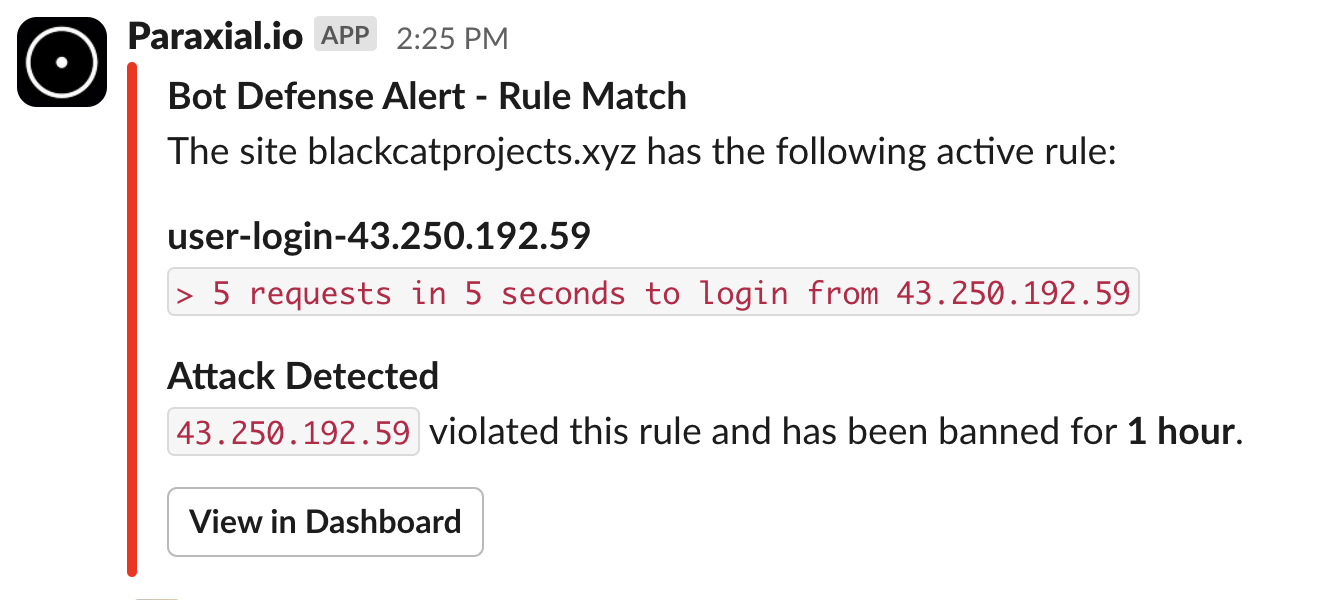View Source LiveView Bot Defense
The Paraxial.io User Manual has section 4. Defining Rules, which covers how to define a rule in the Paraxial.io backend for normal HTTP requests. There are some conditions where this is not enough, for example:
- In a LiveView app, you want to rate limit an action that is triggered via a websocket
- In a Phoenix app with multiple endpoints, you want to rate limit requests with a specific
conn.host.
Paraxial.io agent 2.7.6 introduced the Paraxial.check_rate/6 function for these use cases. For example:
def handle_event("login", %{"user" => user_params}, socket) do
ip_string = socket.assigns.address |> :inet.ntoa() |> to_string()
key = "user-login-#{ip_string}"
seconds = 5
count = 5
ban_length = "hour"
ip = socket.assigns.address
msg = "`> 5 requests in 5 seconds to login from #{ip_string}`"
case Paraxial.check_rate(key, seconds, count, ban_length, ip, msg) do
{:allow, _} ->
do_handle_login(user_params)
{:deny, _} ->
conn
|> put_resp_content_type("text/html")
|> send_resp(429, "Rate limited")
endIt is recommended to keep the seconds value under 60 to avoid excessive memory usage. In the above example the rate limiting key is the incoming IP address. This could also be changed to include the conn.host value, user email, or any value you would like to rate limit on.
The main benefit of this rate limiting over using an open-source version is the banning of IPs will be tracked on the Paraxial.io backend. You can also receive an alert when the rule is triggered via the Paraxial.io Slack App:
